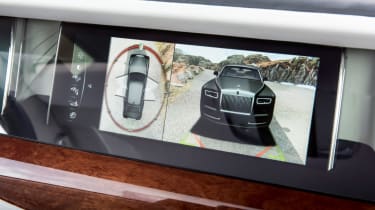Rolls-Royce Phantom review - Interior, design and technology
The Phantom’s mix of craftsmanship, technology and classically-inspired contemporary design is truly unique

While the Phantom VIII is an evolutionary design, it’s quite easy to tell apart from its predecessor. The most obvious difference is the prominent grille, which on the newer car is a little wider and sits flush with the car body. On the Phantom Mk VII it stands proud of the bodywork.
Other external changes include headlamps with LED outlines, more upright front wings and a bonnet that has lost its pronounced central ‘vee’. At the rear of the car, the haunches are a little more tightly sculpted, and there’s a chamfered rear bumper. The side view retains the Phantom’s familiar profile though, and also the conjoined effect of the central door handles, and the iconic RR wheel centres that stay upright as the car drives.
The wide-opening doors reveal a sumptuously leather-trimmed cabin (assuming you’ve not ordered an even more exotic bespoke finish) while the rears close behind you at the touch of a button. The frankly ridiculous 6mm double-glazing ensures you’re isolated from any unpleasant urban or traffic noise, and you can sink your toes into the deep lamb’s wool carpet and enjoy your individually controlled climate settings on the armrests.
Up front, while there’s no shortage of new technology, but it’s the cabinet-like quality of the fascia that draws the attention – especially now there’s an art ‘gallery’ sitting on top of it. That’s the name Rolls-Royce gives to the sweeping expanse of glass that traverses the dash, behind which the manufacturer suggests the owner can commission and display their very own artworks for the ultimate in bespoke.
‘Traditional’ Rolls-Royce elements like the organ-stop switchgear and eyeball vents are retained, and every surface is finished to an impeccable standard in wood, metal or leather.
Sat-nav, stereo and infotainment
The Rolls-Royce Phantom’s infotainment system has taken a great leap forward in the latest generation car, and as well as a 12.3-inch wide TFT virtual instrument pack there’s a 7.3-inch colour head-up display, plus an enormous central TFT display screen that retracts into the dash when not required. With an iDrive style controller that can also be hidden in the central armrest, the system impressively blends a futuristic feel with the timeless craftsmanship on display elsewhere.
The Phantom’s audio quality is also notably impressive, with the listening experience heightened by the silence of the car’s cabin.









